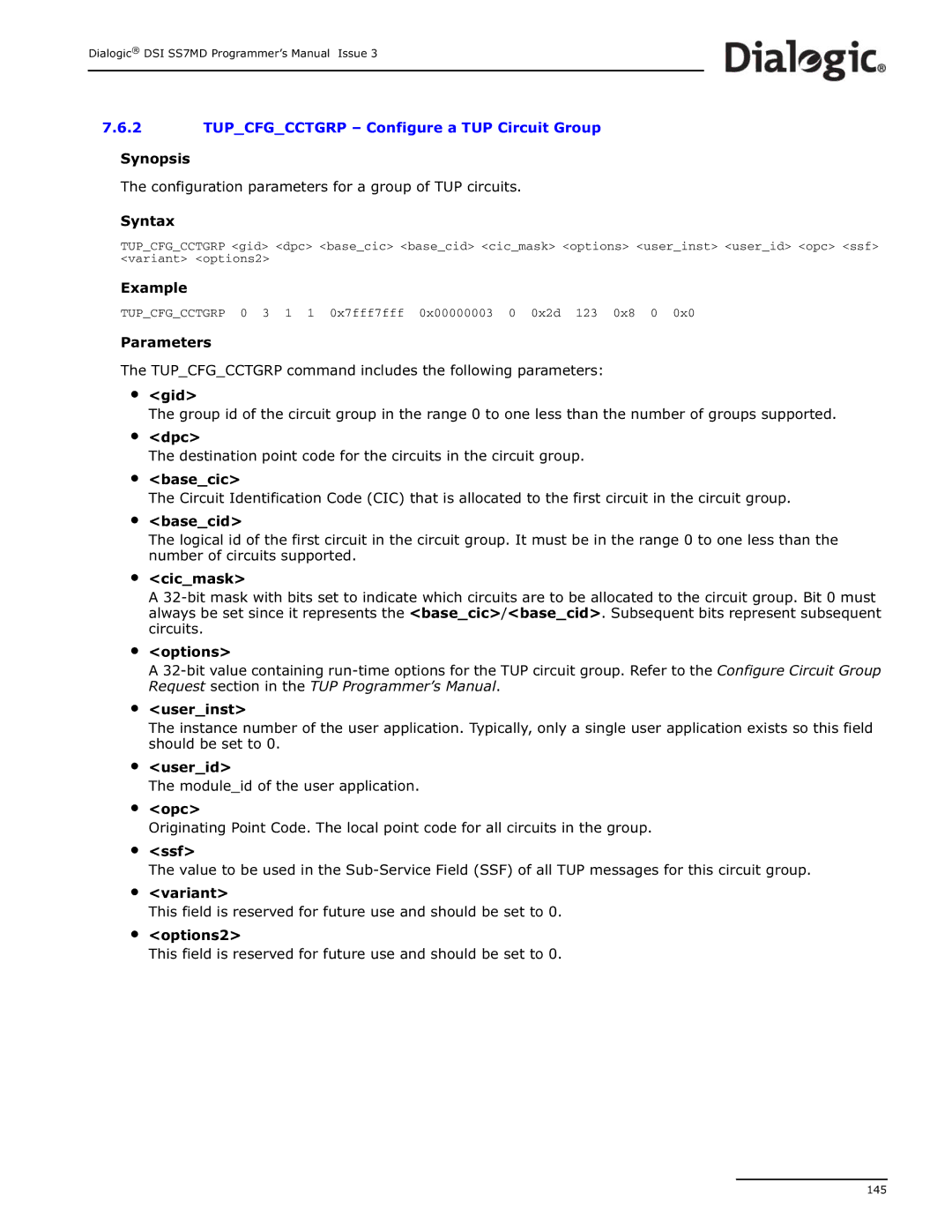
Dialogic® DSI SS7MD Programmer’s Manual Issue 3
7.6.2TUP_CFG_CCTGRP – Configure a TUP Circuit Group
Synopsis
The configuration parameters for a group of TUP circuits.
Syntax
TUP_CFG_CCTGRP <gid> <dpc> <base_cic> <base_cid> <cic_mask> <options> <user_inst> <user_id> <opc> <ssf> <variant> <options2>
Example
TUP_CFG_CCTGRP 0 3 1 1 0x7fff7fff 0x00000003 0 0x2d 123 0x8 0 0x0
Parameters
The TUP_CFG_CCTGRP command includes the following parameters:
•
•
•
•
•
<gid>
The group id of the circuit group in the range 0 to one less than the number of groups supported.
<dpc>
The destination point code for the circuits in the circuit group.
<base_cic>
The Circuit Identification Code (CIC) that is allocated to the first circuit in the circuit group.
<base_cid>
The logical id of the first circuit in the circuit group. It must be in the range 0 to one less than the number of circuits supported.
<cic_mask>
A
•<options>
A
•<user_inst>
•
•
•
•
•
The instance number of the user application. Typically, only a single user application exists so this field should be set to 0.
<user_id>
The module_id of the user application.
<opc>
Originating Point Code. The local point code for all circuits in the group.
<ssf>
The value to be used in the
<variant>
This field is reserved for future use and should be set to 0.
<options2>
This field is reserved for future use and should be set to 0.
145
